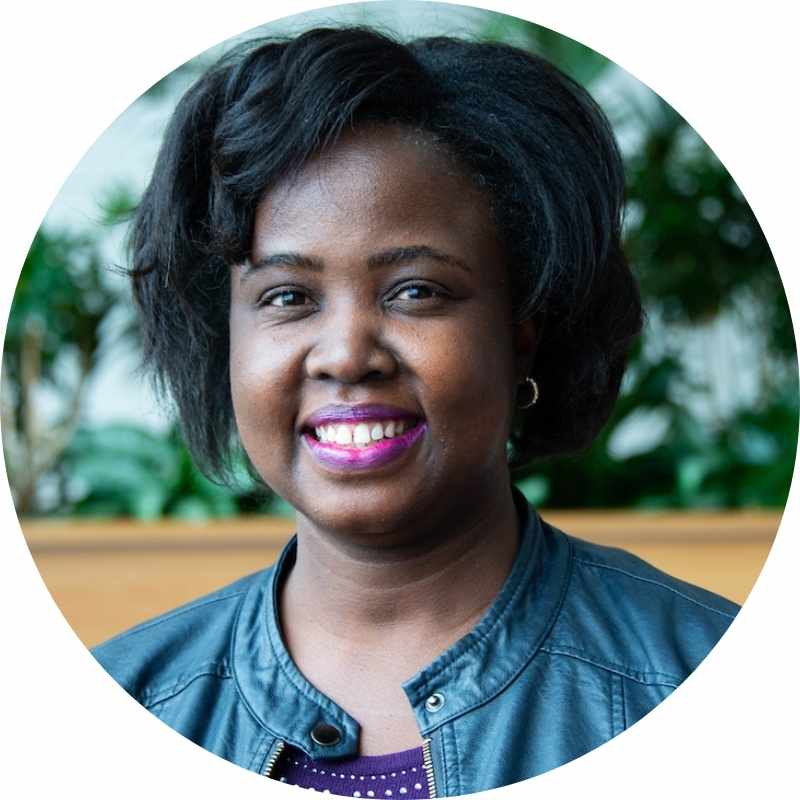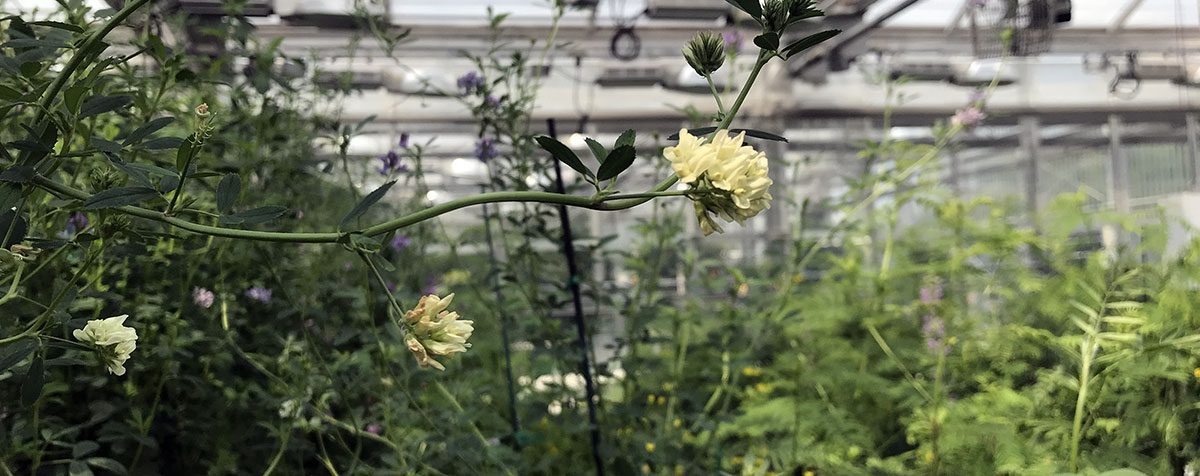Using Plants to Heal the Planet
Human activity has impacted nearly 75% of the world’s land. The New Roots for Restoration Biology Integration Institute wants to find ways to restore agricultural and natural ecosystems by discovering and integrating knowledge about roots, soil, and microbiome communities.
New Roots for Restoration Biology Integration Institute
The New Roots Institute is looking to the North American prairie, a natural ecosystem comprised of long-lived (perennial) plants growing together in diverse bio-diverse assemblages that build soil and the soil microbial community, for answers.
The New Roots Institute aims to find ways to restore agricultural and natural ecosystems by discovering and integrating knowledge about roots, soil, and microbiome communities. By increasing our understanding of natural ecosystems, the New Roots Institute can harness wild perennial plants to help heal the planet while feeding the world with resilient agriculture.
To do this, the New Roots for Restoration Biology Integration Institute will focus on the overarching theme of how parts of the plant roots and shoots relate to one another, how they vary across individuals, populations, and species, and how those relationships influence and are influenced by plant communities and the soil ecosphere, including both the soil and its microbial community. The New Roots Institute will unleash the power of the Center’s cutting-edge core facilities and technologies to measure above-ground and below-ground plant phenotypes. The Plant Phenotyping Facility and Plant Growth Facility will facilitate quantification of plant traits including imaging and analysis of above-ground phenotypes. The specialized computerized tomography (CT) X-Ray facility and mesocosms in Dr. Chris Topp’s lab will allow scientists to see the subterranean world of roots nondestructively, to help answer questions about plant-microbe interaction and carbon sequestration.
The New Roots Institute offers an enormous opportunity for transformative educational training and career growth for scholars…
Allison Miller, PhD Member, Director of the New Roots Institute
Plant Organismal Systems
Plants are unusual organisms: Half the plant body (primarily the shoot system) is surrounded by air, while the other half of the plant body (primarily the root system) is surrounded by soil. Because plants support productivity in natural and agricultural ecosystems and build soils through their roots, understanding variation and covariation in above- and belowground traits is critical.
Population and Community Ecology
The New Roots Institute will test the distribution of traits among populations within species and the plasticity of traits across environments. The team will test the extent to which plant traits determine community and soil ecosphere properties. They will answer basic questions including: why are plant communities so diverse bio-diverse, why are diverse communities bio-diverse plant communities more productive and what determines the rates of carbon sequestration in soil?
Soil Ecosphere
A primary goal of the Institute is to understand the reciprocal influences of the soil ecosphere on root and shoot phenotypes, and vice versa. Ecosphere includes (1) interactions between plant species, (2) interactions between plants and soil organisms, and (3) mutual influences between plants and soil physicochemical properties and structure. The team hypothesizes changes in all three will occur as plant communities undergo restoration and will help define restoration as it applies to plant-soil interactions.

Training the Next Generation of Scientists
Restoration requires a nimble workforce that understands relationships between plants, plant communities, and the soil ecosphere. The New Roots Institute will partner with the Center’s Education Research Lab and partner institutions to construct highly integrated education, training, and outreach activities intentionally designed with many points of entry and ready mobility across participating labs and institutions.
The New Roots Institute has three main goals for increasing participation in science, and to promote growth and persistence in science careers.
Goal 1: Support
Create and foster a welcoming environment to recruit and support individuals from a wide range of subdisciplines, career stages, perspectives and training environments across the United States.
Goal 2: Educate
Provide meaningful research experiences through Institute projects and network trainees to one another and to the extended network of the Institute, and seed new research ideas through mini-grants for trainees
Goal 3: Train
Establish a multi-tiered training program, with near-peer mentoring, to foster supportive leaders and trained mentors.

The New Roots Institute offers an enormous opportunity for transformative educational training and career growth for scholars from groups that are historically underrepresented in STEM through a commitment to re-envision trainee recruitment and hiring and the establishment of a nurturing environment.
Ruth Kaggwa, PhD Education Researcher and Program Manager, Education Research & Outreach, Danforth Center
Meet the New Roots Institute Partners
The New Roots for Restoration research team includes 26 scientists and educators from nine organizations including:

Meet the New Roots Institute Executive Leadership Team
- Allison Miller, PhD, Member and Principal Investigator; Professor, SLU Department of Biology, Danforth Center, Director of the New Roots Institute
- Ivan Baxter, PhD, Member and Principal Investigator, Danforth Center
- Kris Callis-Duehl, PhD, Executive Director of Education Research and Outreach, Danforth Center
- Ruth Kaggwa, PhD, Education Researcher and Program Manager in the Education Research & Outreach Lab, Danforth Center
- Jim Bever, PhD, Distinguished Foundation Professor and Senior Scientist, University of Kansas
- Laura van der Pol, PhD, Lead Scientist, Soil Ecology Program, The Land Institute
- Alicia Foxx, PhD, Research Scientist, Chicago Botanic Garden
- Kay Havens, PhD, Medard and Elizabeth Welch Director, Plant Science and Conservation, Chicago Botanic Garden
- Ron Revord, PhD, Assistant Professor, Interim Director, MU Center for Agroforestry, University of Missouri-Columbia
- Yvonne Thompson, PhD, Project Manager and Scientist, Danforth Center
- Eric Von Wettberg, PhD, Associate Professor, Department of Plant and Soil Science, University of Vermont
The New Roots for Restoration Biology Integration Institute was established with support from the NSF Biology Integration Institutes program, award number – 2120153.